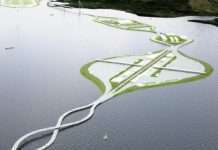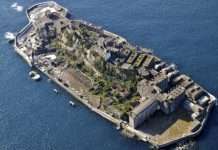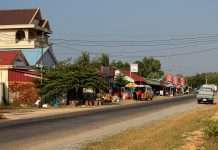Hurricane Melissa slammed into Jamaica as a devastating Category 5 storm last week, leaving behind a trail of destruction and plunging vast swaths of the island nation into darkness. At least 32 people lost their lives, countless homes were destroyed, and vital infrastructure like power lines and ports lay crippled. Yet, amidst this widespread hardship, a glimmer of resilience emerged: solar power.
For Jennifer Hue, a retired tax auditor residing near the hard-hit Treasure Beach, Hurricane Melissa brought catastrophic destruction to her property. Her mango, breadfruit, and papaya trees were decimated by winds exceeding 180 miles per hour. Floodwaters surged through her home, but unlike many of her neighbors, Hue had power. Two years prior, she invested in rooftop solar panels – a decision that proved invaluable in the storm’s aftermath.
Her home became a haven for those who lacked electricity: neighbors flocked to charge their phones, find solace in the cool respite of a refrigerator, and connect with loved ones through working communications. Hue even opened her doors to relatives displaced by the storm.
“The wind was like a tornado, and water came through every crevice,” Ms. Hue said. “But we didn’t lose any solar panels, and the next morning, the sun was shining bright and early. We had our power back.”
While individual stories like Hue’s highlight the immediate benefits of solar energy in disaster situations, the storm also underscores a broader trend across Jamaica: the increasing reliance on renewable sources for resilience against ever-intensifying storms.
Over the past decade, Jamaica has seen a significant surge in rooftop solar installations, growing from less than 1.4 megawatts in 2015 to nearly 65 megawatts in 2023 – a notable accomplishment for such a small island nation. Solar and other renewable energy sources now contribute approximately 10% of Jamaica’s total electricity generation.
The push towards renewables is driven by several factors: mitigating climate change, reducing reliance on imported fossil fuels, and enhancing grid stability against extreme weather events. The vulnerabilities of traditional power infrastructure – reliant on imported oil and liquefied natural gas shipped via vulnerable tankers, pipelines, refineries, and transmission lines – are increasingly apparent in a world grappling with climate-driven disasters.
David Gumbs, an energy expert specializing in the Caribbean at the Rocky Mountain Institute, emphasizes that solar plays a crucial role during recovery efforts.
“With solar, you maintain some ability to continue generating electricity without relying on hundreds of miles of damaged power lines,” he explains. “And in the Caribbean context, when the hurricane passes, if I have rooftop solar and batteries and if I can keep my refrigerator running, my entire neighborhood benefits.”
Jason Robinson, proprietor of Solar Buzz, a Kingston-based solar installer, has witnessed firsthand the storm’s devastation while assessing damage across western Jamaica.
“As long as you install to code, and your roof stays on, you have a chance of surviving extremely long power outages,” he says. “Resiliency is becoming even more important than lowering your bill.”
Although solar remains financially out of reach for many Jamaicans, falling prices driven by the influx of Chinese-manufactured equipment are making it increasingly accessible. Incentives from the Jamaican government – including an income-tax credit for solar installations and financing options offered by banks – are further accelerating adoption. Additionally, the national electric utility now compensates households with solar panels for excess electricity they feed back into the grid.
These efforts have propelled Jamaica towards its ambitious target of generating 50% of its electricity from renewable sources by 2030. Annabelle Todd, manager of an oceanfront guest villa on Treasure Beach, exemplifies this trend. After enduring two consecutive hurricane seasons ravaged by storms like Melissa, she and her guests now enjoy uninterrupted power thanks to a rooftop solar system installed two-and-a-half years ago, costing roughly $30,000.
“Honestly, we could pay it off in two, three years,” she said.
More importantly, for Todd and many on Treasure Beach, the peace of mind offered by uninterrupted power during crisis situations outweighs the initial investment. She notes a marked shift in attitudes towards solar energy within her community.
“Now everyone who runs villas here wants solar. I already see solar suppliers driving up and down Treasure Beach,” she said. “They got hit two years in a row, and they’re not going to fool around anymore.”
The Jamaican government’s commitment to renewable energy is another significant factor driving this shift. While acknowledging that Jamaica faces limitations as a developing nation, Todd underscores the government’s proactive approach:
“I really do think our government has put some fair degree of priority behind solar,” she said. “Most people would go solar, save for the expense.”
As Caribbean nations grapple with escalating climate impacts and rising vulnerability to catastrophic storms, Jamaica stands as a compelling example of how embracing renewable energy can bolster resilience in the face of adversity. The story of Hurricane Melissa reminds us that while infrastructure repairs are essential, investing in decentralized, localized energy solutions like solar power offers an enduring pathway towards a more sustainable and resilient future.






































